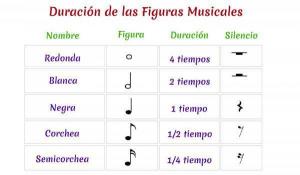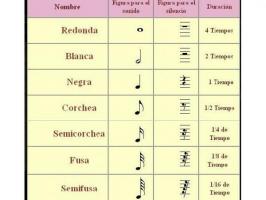Equivalences of musical FIGURES
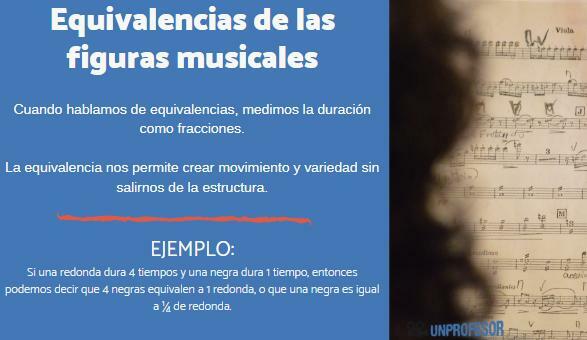
Although we are used to referring to music as an art and a means of expression, the truth is that it is much more complex and wonderful, because it is also it is a language in itself as a form of communication, science of sound and finally, of mathematical relationships.
To the play music we are involved with principles and forms of sound interaction, which are also possible to interpret through mathematical values allowing us to measure them to better understand them and use them in the most effective way creative.
In this lesson from a TEACHER we will learn about equivalences of musical figures, the basic relationship between durations you need to learn for the basics of music reading and writing.
Index
- What are musical figure equivalences
- Definition of musical figure
- Durations of musical figures
What are the equivalences of musical figure.
We measure musical figures by times, however when we talk about equivalences we can refer to their durations as fractions.
- For example, if a round lasts 4 beats and a quarter note lasts 1 beat, then we can say that 4 quarter notes are equal to 1 round, or that a quarter note is equal to ¼ round.
- Another example: a quarter note has the value of 1 beat and an eighth note has the value of ½ beat. This means that two eighth notes equal 1 quarter note.
And this is how we can relate each and every one of the musical figures that exist between them to understand all the combination possibilities that can occur. To help you better understand this, it is very useful to make a diagram that helps you see it graphically, as we do in this video.
What are the equivalences of musical figures for?
Musical creativity is based on the way in which we combine all the basic information that we have at our disposal. This is how, despite the fact that all composers have the same bases, they manage to create such different works.
When we have various instruments, melody lines, or voices In a musical composition, we begin to see how interesting variety is, creating games between notes and rhythms. This is the principle of counterpoint, an extremely important element in music that analyzes the harmonic and rhythmic relationships between musical notes and figures.
Although these voices are independent, when they are part of the same work they must have a common sense so that they advance together and have coherence with each other, this is how the equivalence allows us to create movement and variety without leaving that structure.
Definition of musical figure.
It is important that we understand what is a musical figure. A musical figure is an established symbol, a drawing that indicates the duration of a note or a value in music.
The music consists of two important dimensions: the pitch (the height of a note, which is the vertical dimension) and the rhythm (which is the horizontal dimension). It is the combination of these two factors that makes music such a wonderful art. Musical figures are directly related to the weather, which is the main element of the rhythm.
As we mentioned, music can be measured and understood mathematically. Every musical figure have a specific valuethat indicates the duration of a note or a silence and it is with these durations that we can begin to analyze the equivalences of musical figures.
Equivalence is the relation of equality in quantity or value, so this in music is nothing more than a number of certain musical figures that last the same as another. To further explore this, you need to know what the musical figures are and their duration value.
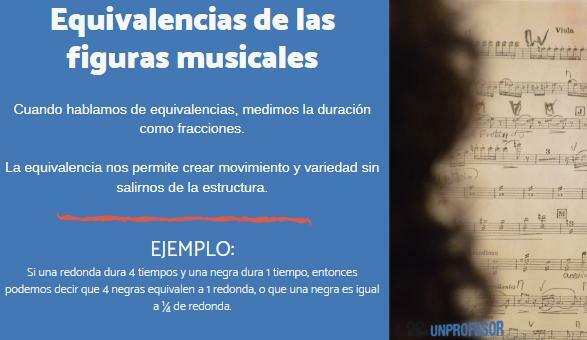
Durations of the musical figures.
The unit of measurement we use for musical figures is “time”. Each different musical figure (be it notes or rests) has a name, a symbol and an assigned duration value. In order to read and write music you must study and memorize these values. These are the basic musical figures:
- Round= 4 times
- White= 2 times
- Black= 1 time
- Quaver= 1/2 time
- Semiquaver = 1/4 time
EYE: We have only mentioned the basic musical figures, since there are other figures such as triplets, sextuplets, dotted notes and elements that alter duration such as ligatures, among others.
If you want to understand this explanation better, watch the video that will surely help you. In addition, you can do the printable exercises with their solutions I have left you on the web so that you can check if you have understood the lesson.
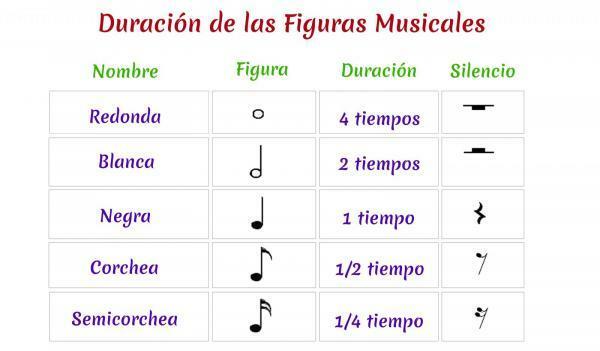
If you want to read more articles similar to Equivalences of musical figures, we recommend that you enter our category of Musical language.

